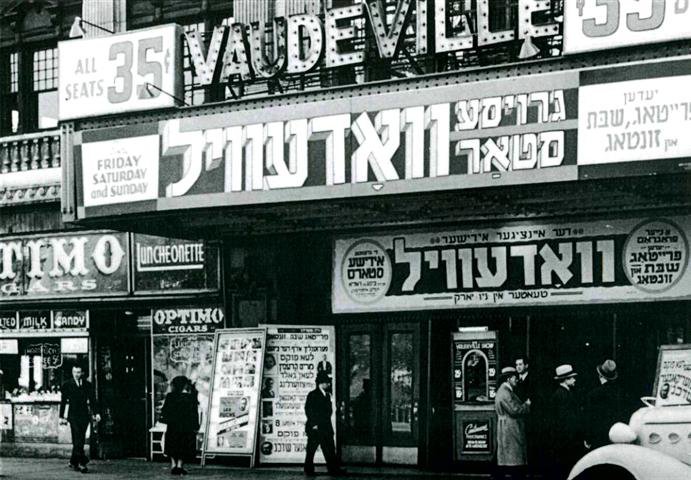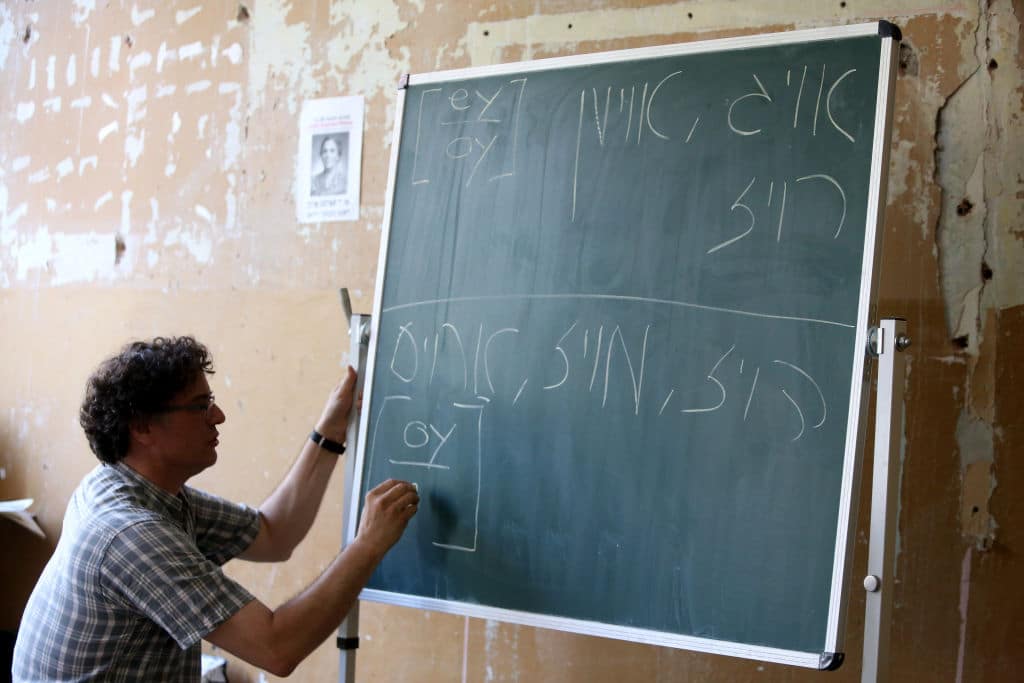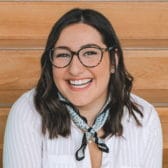
What do Crown Heights, Winnipeg Canada, and TikTok have in common?
For starters, they are only some of the places where you can find fluent Yiddish speakers today.
Yiddish, which directly translates to “Jewish,” is the language of Ashkenazi Jews — the vernacular of Jewish communities in central and eastern European countries.
In the 1940s, it is estimated that around 11 million people spoke Yiddish, according to the Center for Applied Linguistics. The Holocaust destroyed most of the world’s Yiddish population, and the number of native Yiddish speakers has continued to decrease as we move further away from the pre-Holocaust world.
Today, it is estimated that there are under 1 million total Yiddish speakers in the world.

Given this reality, members of the Jewish community, anthropologists, demographers, and linguists have all wrestled with the question: is Yiddish a dying language?

Some scholars would say no. They believe the number of Yiddish speakers is no longer declining and may actually be on the rise, according to Rutgers University’s Jewish Studies department, which offers instruction in Yiddish and courses on Yiddish literature and culture.
We at Unpacked agree that it seems Yiddish is once again ‘having a moment.’
Earlier this year, the language-learning site Duolingo released a Yiddish course, which sparked a lot of excitement in the Jewish community (on Twitter and beyond).
how do I tell my job that I need a week off to focus exclusively on learning yiddish on duolingo
— kosher kaiman (@sapphichellcat) April 6, 2021
So, you learned Yiddish on Duolingo (or from your Bubbie), but now you’re wondering where you can use it. Here’s our guide:
In the Hasidic Jewish world
The most obvious answer? Take a trip to any Hasidic (Orthodox) Jewish community in the world. From Williamsburg, New York, to Outremont, Montreal, or Mea She’arim, Jerusalem, you will find communities that fully function in Yiddish.

This practice is rooted in the ideology of maintaining the customs and traditions of Jews in shtetl-times.
“At one time, some people suspected Hasidim only spoke Yiddish as part of their traditional values,” Rukhl Schaechter, editor of the Yiddish Forverts told me. “But that is changing. There is a Yiddish revival movement within Hasidic culture too.”
“Every other week I see a new Yiddish song being posted on YouTube,” she said. “And some of these songs are not religious at all. They’re about feelings, about living within the community.”
In more places than you may think
Even outside of the Hasidic Jewish world, Yiddish is the vernacular in homes across the world.
Take, for example, our very own assistant director of education, Avi Posen, who grew up speaking Yiddish in Winnipeg, Canada.
“Many people would probably identify with hearing, maybe their grandparents, speaking Yiddish so that their parents wouldn’t understand, and that was sort of like their secret language” he explained about his unique Yiddish connection.
“In my family, that didn’t work because my dad decided when we were born that he was going to speak to us solely in Yiddish.”
On one side of his family, Posen’s great-grandparents helped establish a socialist Yiddish school in Winnipeg in the early 1900s. On the other side, his grandparents are Holocaust survivors who regularly spoke to him in Yiddish.

“So it wasn’t coming from a Hasidic side, it was from the generations of Yiddish speakers in my family who came before me,” he said.
Posen went on to study education and as a teacher at Winnipeg’s only Jewish secondary school, one of the subjects he taught was Yiddish. To him, it was a powerful way to connect students with Jewish history and culture.

Schaechter believes a growing population of Yiddish speakers in non-Hasidic communities might help to bridge the gap between modernity and the Hasidic world, and Posen can attest to that theory.
“I live a block away from this Hasidic Yeshiva here in Haifa,” he told me. “And sometimes at night, when I’m walking the dog, I’ll start speaking to some of the Yeshiva boys in Yiddish and they get this very fascinated look on their face because they don’t understand why someone that isn’t dressed in Hasidic garb knows Yiddish.”
“In the end, they’re really excited by it. We connect, speak and suddenly they feel a deep connection with me even though I don’t look like them.”
Even on Tik Tok
Perhaps the most surprising place a Yiddish-speaker might find community is somewhere that can be accessed from anywhere in the world: on Yiddish TikTok.
For those that aren’t familiar with TikTok, the algorithm tends to place users on different ‘sides’ of the app (gardening Tik Tok or Jewish TikTok or Book-Tok, to name a few examples).
Yiddish TikTok has garnered quite a following.
The hashtag “Yiddish TikTok” has over 4.4 million views and “#Yiddish” has over 24 million views.
The video topics range from music and culture to education. By the looks of it, many of the users engaging with those hashtags are Yiddish-learners using TikTok as a platform to learn and meet other students.
@c.o.bernstein How good it is to speak Yiddish with friends in person!
♬ original sound – Cameron Bernstein
Or to share Yiddish pick up lines.
Bottom line: Yiddish can be heard in Brooklyn, by the beach in Haifa, in one of North America’s coldest cities, or even pop up on your TikTok feed. Does that sound like a dying language? I’ll let you be the judge of that.
Is Yiddish spoken in more places than you thought? Let us know on Instagram, Twitter, and TikTok!
Originally Published Dec 16, 2021 12:02AM EST
